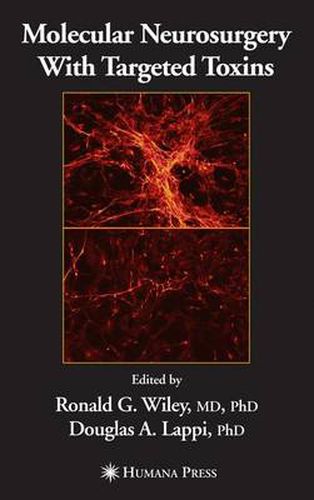Readings Newsletter
Become a Readings Member to make your shopping experience even easier.
Sign in or sign up for free!
You’re not far away from qualifying for FREE standard shipping within Australia
You’ve qualified for FREE standard shipping within Australia
The cart is loading…






Pioneers and leading researchers explain the theory and techniques of using targeted toxins experimentally. The highly successful use of the 192 IgG-saporin and ME20.4-saporin immunotoxins to lesion the cholinergic basal forebrain in order to model the behavior, anatomy, physiology, and pharmacology of Alzheimer’s disease in animals is treated in detail to give a potential user the knowledge to comfortably use the techniques involved. The uses of important new lesioning agents such as anti-DBH-saporin immunotoxin to make remarkably selective lesions of catecholaminergic neurons, hypocretin-saporin that can produce narcoleptic animals, and other saporin conjugates, such as neuropeptide-saporin conjugates for pain research and cholera toxin B chain-saporin to produce a model of CNS demyelination are explained by experts in the field.
$9.00 standard shipping within Australia
FREE standard shipping within Australia for orders over $100.00
Express & International shipping calculated at checkout
Pioneers and leading researchers explain the theory and techniques of using targeted toxins experimentally. The highly successful use of the 192 IgG-saporin and ME20.4-saporin immunotoxins to lesion the cholinergic basal forebrain in order to model the behavior, anatomy, physiology, and pharmacology of Alzheimer’s disease in animals is treated in detail to give a potential user the knowledge to comfortably use the techniques involved. The uses of important new lesioning agents such as anti-DBH-saporin immunotoxin to make remarkably selective lesions of catecholaminergic neurons, hypocretin-saporin that can produce narcoleptic animals, and other saporin conjugates, such as neuropeptide-saporin conjugates for pain research and cholera toxin B chain-saporin to produce a model of CNS demyelination are explained by experts in the field.